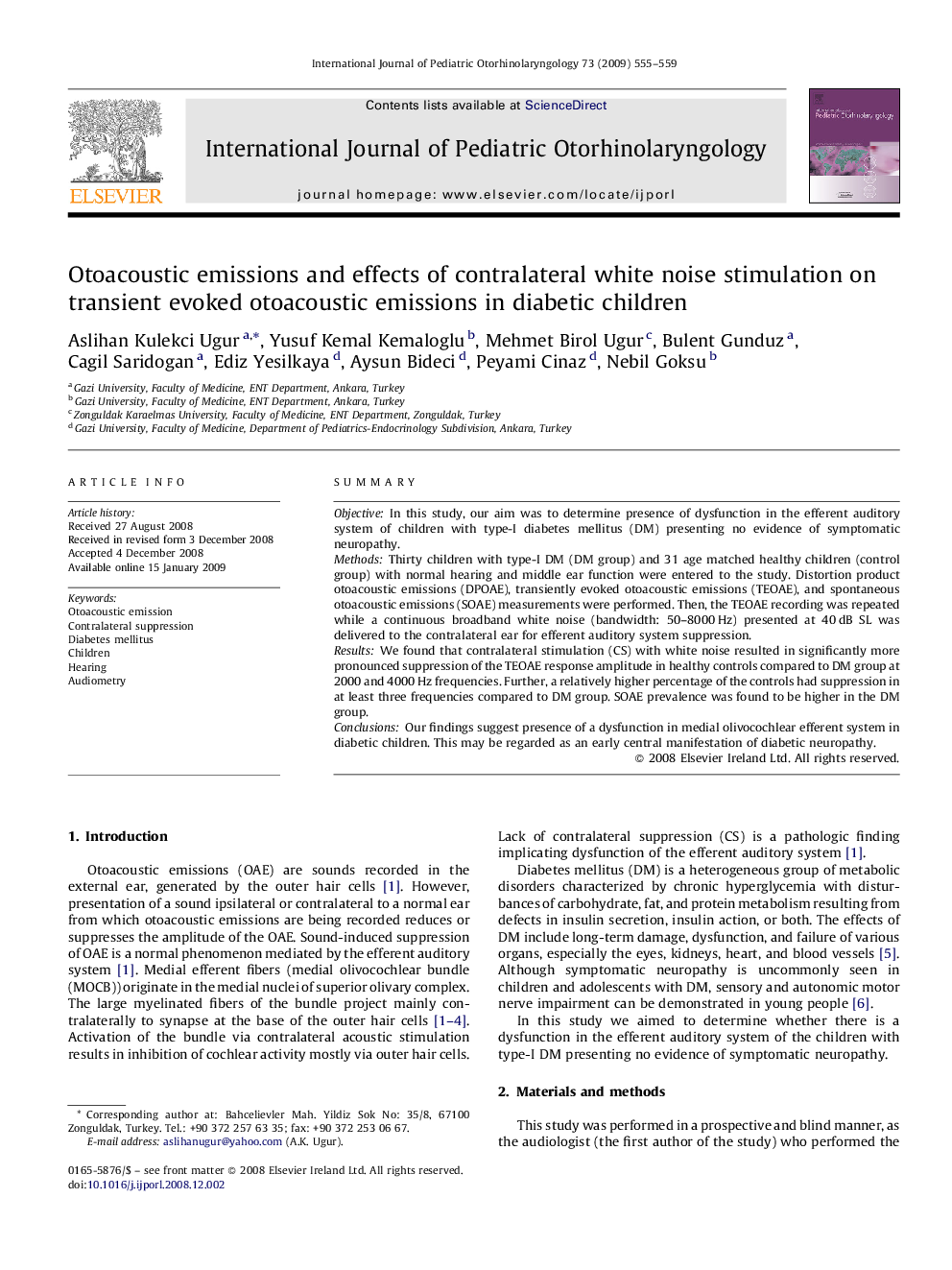| Article ID | Journal | Published Year | Pages | File Type |
|---|---|---|---|---|
| 4113085 | International Journal of Pediatric Otorhinolaryngology | 2009 | 5 Pages |
SummaryObjectiveIn this study, our aim was to determine presence of dysfunction in the efferent auditory system of children with type-I diabetes mellitus (DM) presenting no evidence of symptomatic neuropathy.MethodsThirty children with type-I DM (DM group) and 31 age matched healthy children (control group) with normal hearing and middle ear function were entered to the study. Distortion product otoacoustic emissions (DPOAE), transiently evoked otoacoustic emissions (TEOAE), and spontaneous otoacoustic emissions (SOAE) measurements were performed. Then, the TEOAE recording was repeated while a continuous broadband white noise (bandwidth: 50–8000 Hz) presented at 40 dB SL was delivered to the contralateral ear for efferent auditory system suppression.ResultsWe found that contralateral stimulation (CS) with white noise resulted in significantly more pronounced suppression of the TEOAE response amplitude in healthy controls compared to DM group at 2000 and 4000 Hz frequencies. Further, a relatively higher percentage of the controls had suppression in at least three frequencies compared to DM group. SOAE prevalence was found to be higher in the DM group.ConclusionsOur findings suggest presence of a dysfunction in medial olivocochlear efferent system in diabetic children. This may be regarded as an early central manifestation of diabetic neuropathy.
